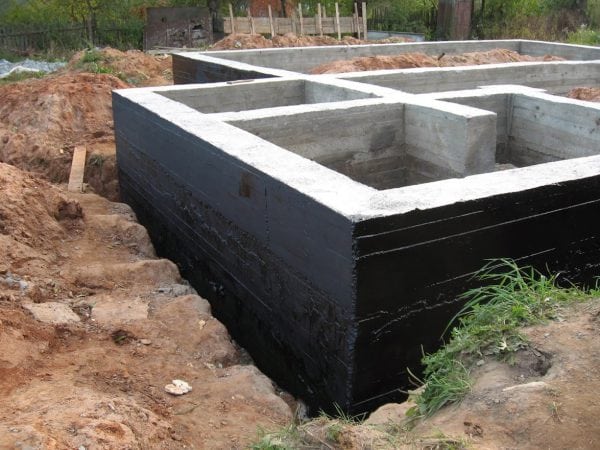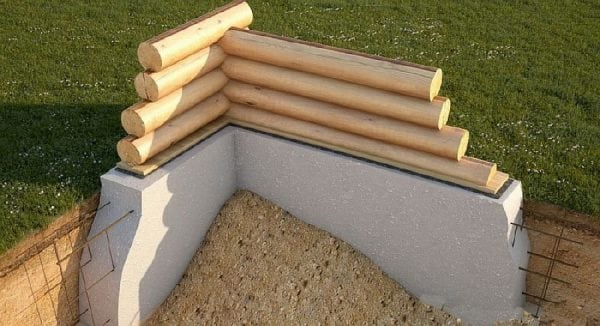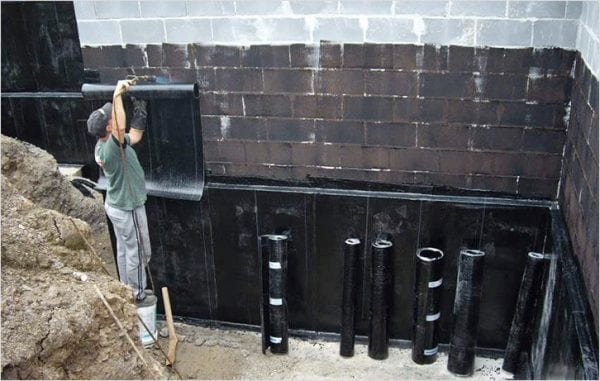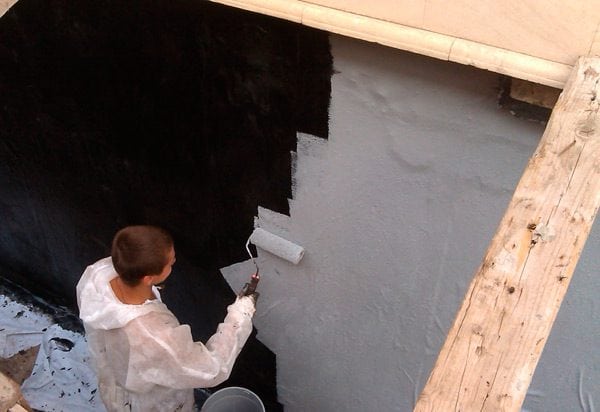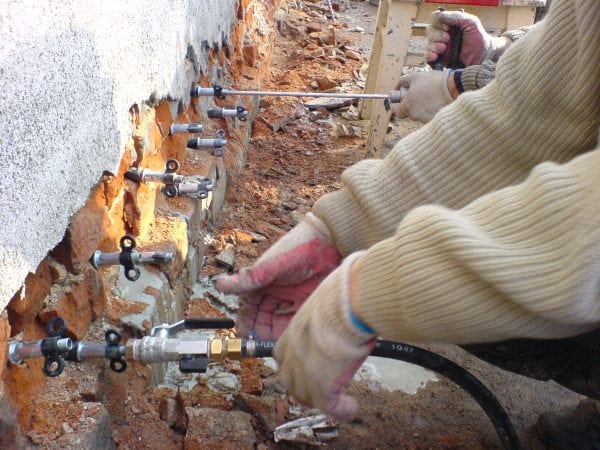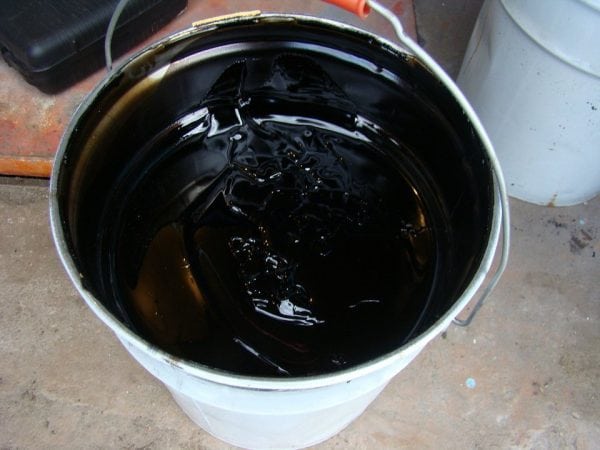Waterproofing is one of the most critical stages in the construction of a building. Properly performed insulation works guarantee the protection of the foundation of the house from moisture and other environmental factors. It is no secret that at the time of pouring concrete, the mixture leaks. The substance reacts to groundwater, which leads to weakening of the foundation, the ingress of moisture into the walls of the house and the formation of cracks in them. The choice of materials with which you can process the foundation is quite wide today.
- Rules for waterproofing
- Waterproofing the foundation of a wooden house
- Horizontal waterproofing
- Waterproofing waterproofing
- Penetrating horizontal waterproofing of the foundation
- Injection foundation waterproofing
- Vertical waterproofing
- Bituminous waterproofing
- Roll waterproofing
- Plaster waterproofing
- Liquid rubber
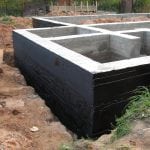
Rules for waterproofing
Each process that accompanies construction has its own characteristics. If they are neglected, then you can spoil the whole plan and get unpleasant consequences. We will analyze important points that require increased attention when performing actions aimed at protecting the basement of your home from moisture.
- To understand what type of insulation is suitable for your home, you need to set the groundwater level.
- If you are creating your foundation on loose soils, you should prevent possible flooding or floods due to heavy rainfall.
- Pay attention to the factor that the soil has the ability to swell. This phenomenon occurs due to the constant change in weather conditions and the ability of water to expand or contract during freezing in the winter and thawing in the spring. Thus, the structure of water changes, which causes the deformation of the foundation.
- Consider the conditions under which the building will be operated. If you are building an object for commercial purposes, for example, storage facilities, then the level of waterproofing you need to choose the best.
Waterproofing the foundation of a wooden house
So, what difficulties can you encounter when building your own home? If your choice fell on the construction of a wooden house, then experts recommend using horizontal waterproofing to protect against moisture even during the preparatory work. The drainage system is directly related to horizontal waterproofing and is necessarily used where there is a high level of groundwater.
If we talk about the specifics of the preparation, it is carried out in stages: First of all, a foundation pit breaks out under the house, clay is poured onto its bottom (a layer of about 20-30 centimeters), this layer is carefully compacted. A layer of concrete substance - screeds (about 5-7 centimeters) is laid on top of the clay. Concrete hardens after ten days, after which you can start processing the foundation with bituminous mastic and laying the first layer of roofing material.
to contents ↑Further, in the process of creating a wooden house, the algorithm will be repeated: a layer of roofing material on the treated foundation surface with bituminous mastic. It is important not to forget (especially in houses where there is a base) about protecting the upper layer of the base of the wooden house, because a wooden object will press on it.
Horizontal waterproofing
Horizontal foundation waterproofing is needed to prevent moisture from entering. The foundation is made of porous materials, so it absorbs water. If the wet surface is frozen, there is a risk of cracking. A moist foundation promotes fungus and mold. If insulation is properly horizontal horizontally, then the negative effects of moisture penetration can be prevented.
Types of waterproofing:
- rolled, produced before the erection of walls by gluing or surfacing on a prepared surface;
- impregnation is done during the construction of the building or its immediate operation.
Waterproofing waterproofing
To perform an adhesive waterproofing, you need a device that aligns the screed. It is made from a mixture of sand, concrete and a special filler. The insulation material is rolled, based on polymers or bitumen.
How is waterproofing waterproofing done:
- the surface is leveled with a screed, in which additives are added to increase resistance to moisture;
- primer primer based on bitumen or water is applied to the screed. After the primer dries, mastic is applied;
- if roll material is selected, then it is laid on the mastic before it dries. When the material has an adhesive layer, it is better to lay it after the mastic dries. For overfloor insulation, a propane burner is needed to heat the material and roll it over the surface;
- materials are applied in several layers;
- for a room with a basement, waterproofing is applied under the base of the foundation - at the place where the basement ends. If the building is without a basement, waterproofing the foundation from the walls is enough.
Penetrating horizontal waterproofing of the foundation
Penetrating penetrating insulation from moisture is made from a solution of cement and chemical activators. The solution crystallizes upon interaction with the concrete surface and forms a moisture-proof layer.
How is waterproofing made:
- the foundation is cleaned, dirt is removed;
- cement solution is mixed with water, chemical activators and filler;
- moisten the concrete surface;
- cement mortar is applied;
- leave the surface for 2-3 days - until the solution completely dries.
Injection foundation waterproofing
Injection waterproofing is the saturation of the foundation with a gel solution through special holes. The solution penetrates to a depth of 0.5 meters, when in contact with water, it swells and closes the holes so that moisture does not penetrate the foundation.
How do injectable waterproofing:
- from the inside, the surface is cleaned of dirt;
- the number of holes and their placement are calculated. The location is chosen so that it turns out to fill in a continuous layer of mortar under the foundation;
- holes are drilled at an angle, then special nozzles are inserted to fill the solution;
- low-pressure pumps pump polymer gel into the holes;
- they take out the nozzles and close the holes with cement.
Horizontal waterproofing of all types is highly effective, but for maximum protection should be made and vertical insulation from moisture.
to contents ↑Vertical waterproofing
Vertical waterproofing is a way to combat high humidity, in which the walls of the base of the building and the basement are strengthened. It is possible both at the stage of construction of the facility, and during the preparation for construction.
to contents ↑Vertical waterproofing is carried out from the outside of the base of the building and is applied to the level of the sidewalk or blind area. There are several types of vertical waterproofing.
Bituminous waterproofing
The use of bitumen waterproofing is considered the easiest and most affordable way.The bottom line is that contractors treat the foundation with bituminous mastic, as a result of which the substance penetrates into all cracks and gaps, filling them. This feature of bitumen mastic helps to protect against moisture, and, therefore, the strength of the base of a wooden house is ensured.
If you bought a bitumen block, you should melt it to a liquid consistency in any container, after which you need to apply the mixture in several layers (from two to four). It is important to remember that the surface needs to be processed with melted bitumen mastic at a time, because repeated heating of the substance will lead to the loss of useful properties.
Pros:
- ease of use;
- availability of building material;
- low cost.
Minuses:
- not very high level of waterproofing;
- a relatively short service life of mastic - up to 15 years.
Roll waterproofing
Rolled waterproofing of a wooden house with the help of roofing felt is the application of a layer of one of its types: techno- or isoelast. This method can exist both independently and as a complement to the previous type of insulation. The process of installing protection is very similar to laying the roof. You need to take a special burner, heat the roofing material and overlap it on the base already treated with the bitumen mixture. Joints of roofing material are also heated and fixed.
Pros:
- long service life - up to 50 years;
- acceptable price.
Minus is a rather difficult process for independent execution.
to contents ↑
Plaster waterproofing
Waterproofing with plaster means creating a homogeneous mixture for strengthening a wooden house from the plaster itself with the addition of components that are resistant to any level of moisture. The base is impregnated by applying the substance with a spatula to the walls of the foundation. Such a composition not only protects against groundwater, but evens the very base of the object.
Pros:
- low cost of materials;
- ease of waterproofing.
Minuses:
- short service life - up to 15 years;
- the possibility of cracking over time;
- insufficient moisture protection.
Liquid rubber
If you decide to use liquid rubber, then the base will be reliably protected, because it is perfectly sprayed and serves your family for a long time. Before applying the substance, the foundation and the base should be treated with a special primer.
There are two types of liquid rubber - elastomix and elastopase. The first type is applied in a single layer and hardens within a few hours. After opening the container with the mixture, the substance will no longer be stored for a long time, it must be fully used before setting. As for the second type, the mixture can be applied in two dense layers, and the remains will be stored in the tank for some time.
Protection of the foundation is a very important stage in the construction of the house, since the further operation of the building will depend on how it is done. If everything is done correctly, then the house will stand idle for many years.
Believe me, these are just some tips on how to protect the base and foundation of your home. Experts will help determine already during the initial preparation, what type of insulation from moisture is better for the base of your house.

